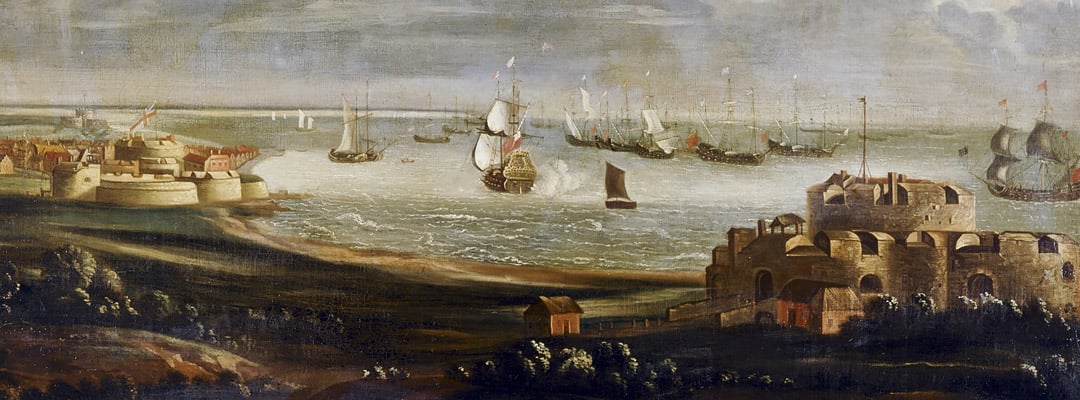Maritime Decline and the Battle of the Downs
How a major sea battle between the Dutch and the Spanish, in full view of Dover, Deal and Walmer castles on the Kent coast, revealed as much about the English navy as it did about its participants.

TAX AND SPEND
During the reign of Charles I (1625–49) the castles of Dover, Deal and Walmer witnessed a deeply humiliating incident for the English – one that contrasted starkly with the glory days of English naval power, which saw Elizabeth I defeating the Spanish Armada in 1588.
Perceiving a similar threat, Charles had become increasingly preoccupied with raising money for defence against a backdrop of turbulence in Europe, while the Dutch continued their long campaign of revolt against Spanish rule (the ‘Eighty Years’ War’).
A ‘Ship Money’ tax was thus levied in 1634 to cover the costs of coastal defence and a new ship, the Sovereign of the Seas – a name which expressed Charles’s belief in English naval superiority.
‘A BLOODY FIGHT’
Objections to the Ship Money tax destabilised the monarchy, but worse was to follow, which would see Charles’s reputation abroad similarly damaged.
As the Eighty Years’ War continued, another Armada sailed from Spain.
This time it was in pursuit of the Dutch, who faced down the Spanish on 11 October 1639. The two fleets joined battle in the Downs – part of the Channel off the east Kent coast, in English territorial waters, and within sight of a trio of English castles.
This represented a challenge to English authority. At 10am that day an appalled Earl of Suffolk wrote: ‘The Spaniards and Hollanders are in a bloody fight in the Downs.’ By 3pm his dispatch noted that ‘some ships are come on shore near the Castles in the Downs’ and that he had seen ‘two Spanish ships fired near Walmer Castle’.
SEA CHASE
Many Spanish vessels had ‘willingly run on shore’ to escape the Dutch. The English fleet under Admiral Sir John Pennington now lay between the warring factions, to prevent the Dutch from ‘fetching off’ the stranded Spanish ships.
As the two fleets fought their way westwards, Pennington’s men ‘continued chasing and shooting at them until they were past the South Foreland’. In other words, the fleet for which Charles’s people had suffered such heavy taxation was powerless to do much more than escort the intruders off the premises.
That this should take place under the gaze of the watchful towers of Dover, Deal and Walmer, strategically placed as guardians of the Channel, made the humiliation more painful still. Just as they overlooked both land and sea, the three castles were also witnesses to a moment symbolising the collapse of Charles’s claim to sovereignty over the seas.
SYMBOL OF THE TIMES
This incident has been largely overshadowed by the later events of Charles’s reign, which degenerated into civil war in 1642.
Yet the Battle of the Downs had one outcome that mirrored one of the key themes of the Civil War: the common people prevailing against their king. The records of the Admiralty Court of the Cinque Ports in 1639 reveal that it was not Charles but his subjects who benefited from the Battle of the Downs: from the man who buried the dead Spanish bodies washed ashore at Deal, to the locals who pillaged the stricken ships.
By Serena Cant
